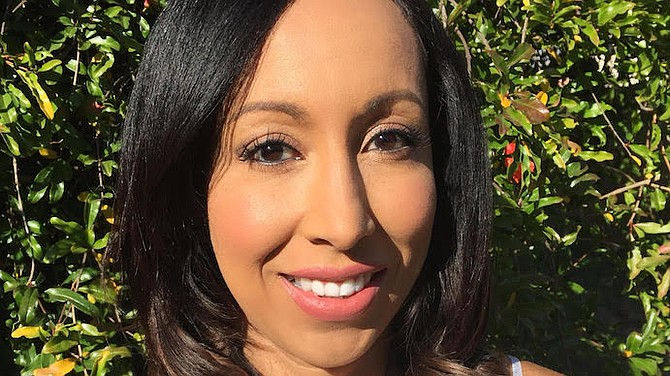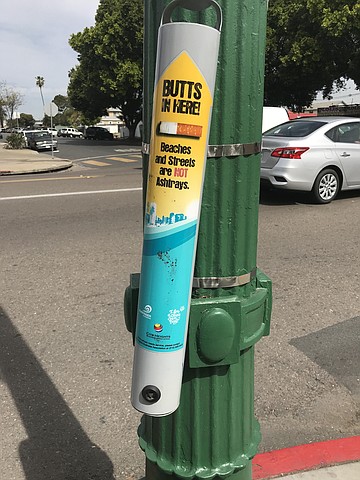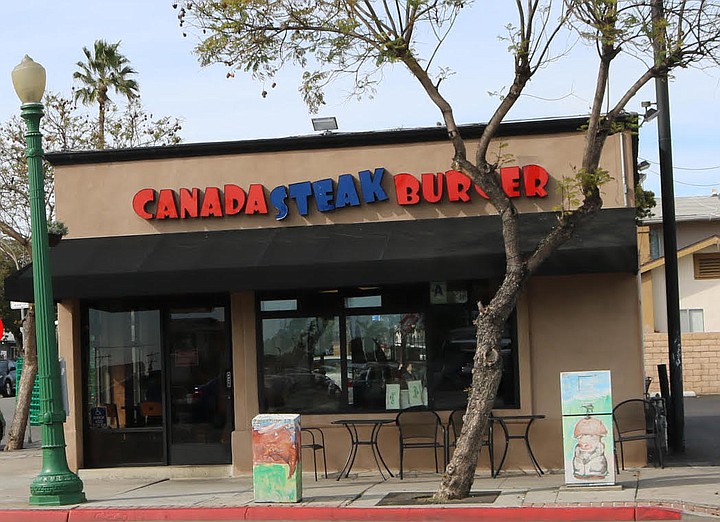 Facebook
Facebook
 X
X
 Instagram
Instagram
 TikTok
TikTok
 Youtube
Youtube

Last year, 32,247 cigarette butts were collected from the San Diego beach cleanups, according to the San Diego Coast Keeper data numbers.

The City Heights Business Association and I Love A Clean San Diego are taking a proactive approach to drop those numbers even more for 2018.
They mounted four ashtrays on light poles along University Avenue in Cherokee Point.
“I never noticed it,” said Lucy, a sales rep at the Metro PCS on University Ave. between 35th and 36th. On March 19th, at about 4 p.m., I had to walk her outside of her store and point out the ashtray in front of her doorway. It measures about 36″ tall and 3.5″ wide, and was strapped to the light pole at about eye level. “I think it’s a good thing,” she said. “I never really looked around here because I don’t smoke, but wow, look at all of these.” A man was salvaging them because many still had tobacco in them.

I walked across the street and noticed two more ashtrays on the north side of University Avenue. One ashtray was on a pole outside of the Uno Bar between 34th and 35th — by where the taco cart and a spinning griller is set up at night. The other ashtray was on the pole on the corner of 36th Street in front of the Canada Steak Burger.
“All the areas were identified as problem areas by the maintenance crew doing sidewalk sweeping in the business district,” said Enrique Gandarilla, the executive director of the business association. He said the four ashtrays were installed in late September and didn’t cost them anything, but have a value of about $200 each installed.
“There was an excessive amount of cigarette butts found in locations nearby the storm drains,” he said, “which could potentially end up going to the ocean.”
Paloma Aguirre Bacalski from Wildcoast agreed with Gandarilla after she saw a photo of one of his ashtrays. “The receptacles are a way to dissuade folks from throwing butts on the street which as soon as it rains, will make their way to the ocean or closest waterway,” she said. “City Heights litter would drain into Chollas Creek, which drains into the Pueblo San Diego watershed.”
The fourth ashtray was found on the corner of University Avenue and 38th Street, in front of the Family Dollar store.
“There’s so many cigarette butts out there because of the bus stop,” said Elizabeth, “they smoke their cigarette before getting on the bus and when they get off the bus, the first thing they do is light up outside.”
As I walked around the ashtray, I noticed butts on the sidewalk, along the curves and up the 38th Street sidewalk.
Elizabeth has worked here for over two years and barely noticed the ashtray mounted on the pole last month. “They don’t necessarily put it in the container they throw it on the floor,” she said. “I know because I have to sweep it up.”
Gandarilla said that his organization cleans out the ashtrays on a bi-weekly basis and the ashtray in front of the Elizabeth’s store is the most frequented of the four, accumulating about 80 butts every two weeks.
“Its a social gathering spot too,” Elizabeth said. “And we sell about 30 packs of cigarettes a day.”
Aguirre-Bacalski is the coastal and marine director for Wildcoast. “Cigarette butts are the number one debris found in waterways and coastal cleanups,” she said. “They can contain up to 150 toxic chemicals and can take up to ten years to degrade — so they are pretty pervasive in the environment.”


Last year, 32,247 cigarette butts were collected from the San Diego beach cleanups, according to the San Diego Coast Keeper data numbers.

The City Heights Business Association and I Love A Clean San Diego are taking a proactive approach to drop those numbers even more for 2018.
They mounted four ashtrays on light poles along University Avenue in Cherokee Point.
“I never noticed it,” said Lucy, a sales rep at the Metro PCS on University Ave. between 35th and 36th. On March 19th, at about 4 p.m., I had to walk her outside of her store and point out the ashtray in front of her doorway. It measures about 36″ tall and 3.5″ wide, and was strapped to the light pole at about eye level. “I think it’s a good thing,” she said. “I never really looked around here because I don’t smoke, but wow, look at all of these.” A man was salvaging them because many still had tobacco in them.

I walked across the street and noticed two more ashtrays on the north side of University Avenue. One ashtray was on a pole outside of the Uno Bar between 34th and 35th — by where the taco cart and a spinning griller is set up at night. The other ashtray was on the pole on the corner of 36th Street in front of the Canada Steak Burger.
“All the areas were identified as problem areas by the maintenance crew doing sidewalk sweeping in the business district,” said Enrique Gandarilla, the executive director of the business association. He said the four ashtrays were installed in late September and didn’t cost them anything, but have a value of about $200 each installed.
“There was an excessive amount of cigarette butts found in locations nearby the storm drains,” he said, “which could potentially end up going to the ocean.”
Paloma Aguirre Bacalski from Wildcoast agreed with Gandarilla after she saw a photo of one of his ashtrays. “The receptacles are a way to dissuade folks from throwing butts on the street which as soon as it rains, will make their way to the ocean or closest waterway,” she said. “City Heights litter would drain into Chollas Creek, which drains into the Pueblo San Diego watershed.”
The fourth ashtray was found on the corner of University Avenue and 38th Street, in front of the Family Dollar store.
“There’s so many cigarette butts out there because of the bus stop,” said Elizabeth, “they smoke their cigarette before getting on the bus and when they get off the bus, the first thing they do is light up outside.”
As I walked around the ashtray, I noticed butts on the sidewalk, along the curves and up the 38th Street sidewalk.
Elizabeth has worked here for over two years and barely noticed the ashtray mounted on the pole last month. “They don’t necessarily put it in the container they throw it on the floor,” she said. “I know because I have to sweep it up.”
Gandarilla said that his organization cleans out the ashtrays on a bi-weekly basis and the ashtray in front of the Elizabeth’s store is the most frequented of the four, accumulating about 80 butts every two weeks.
“Its a social gathering spot too,” Elizabeth said. “And we sell about 30 packs of cigarettes a day.”
Aguirre-Bacalski is the coastal and marine director for Wildcoast. “Cigarette butts are the number one debris found in waterways and coastal cleanups,” she said. “They can contain up to 150 toxic chemicals and can take up to ten years to degrade — so they are pretty pervasive in the environment.”
Comments